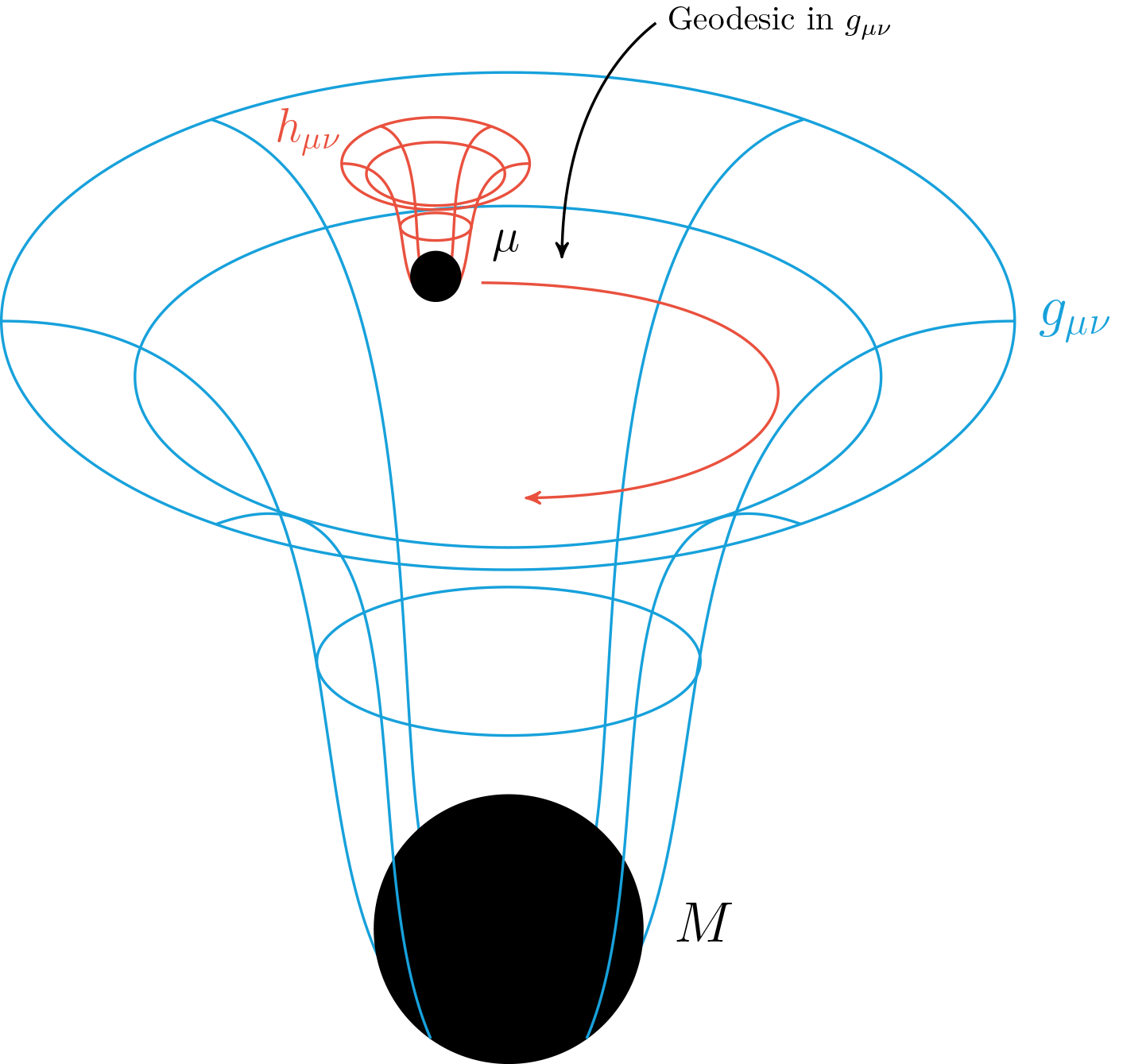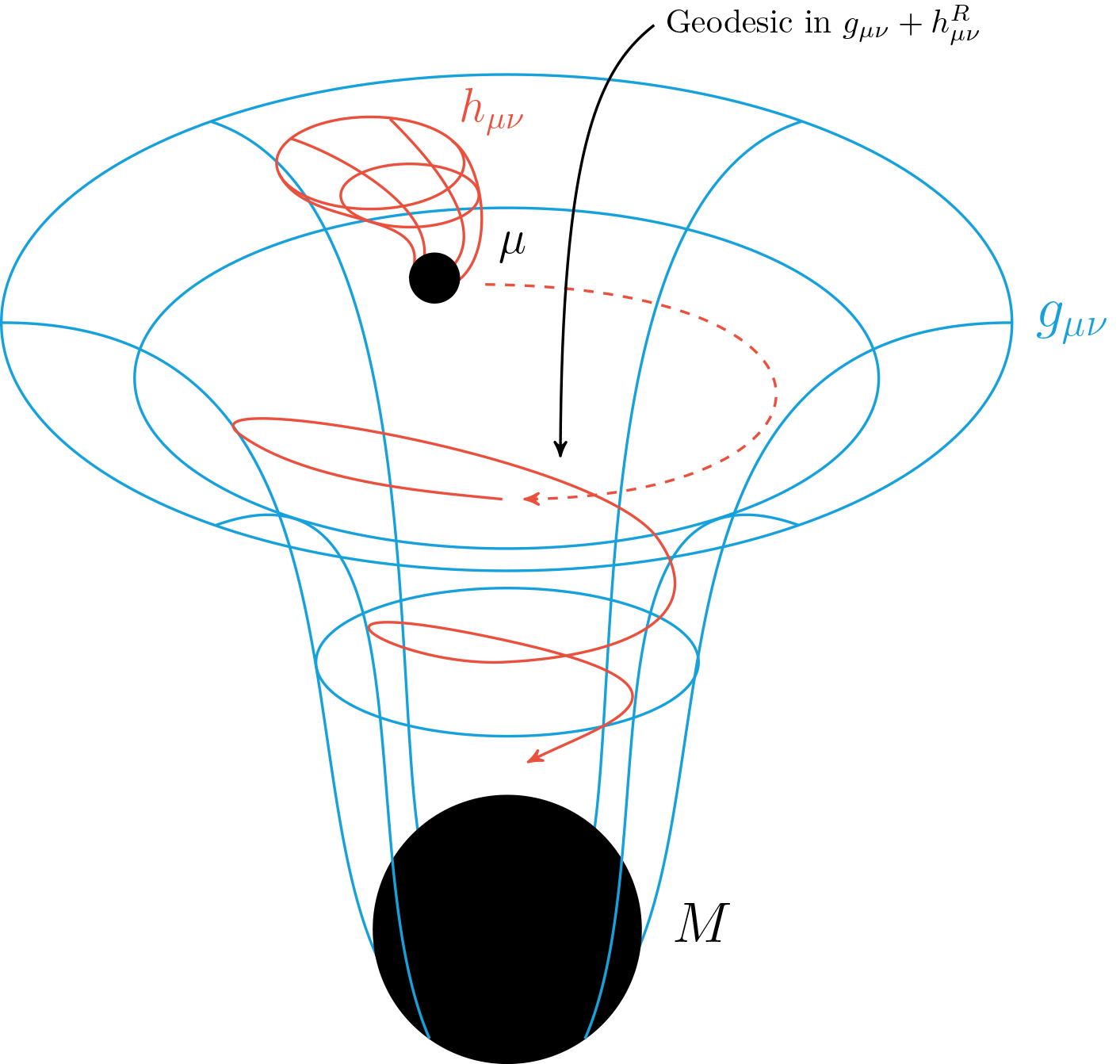Talk at BritGrav21
This Black Hole Week I gave a talk at BritGrav21 on my work on modelling gravitational waves from systems from extreme-mass-ratio inspirals (EMRIs) using black hole perturbation theory (BHPT).
You can view my slides for the talk here.
So, let's have a deep dive into this...
An EMRI system consists of a small compact object of mass 1-10 solar masses (e.g., neutron star or black hole) moving on a decaying orbit about, and ultimately into, a supermassive black hole of mass M ∼ 100 solar masses.
An example of a Kerr geodesic orbit.
Modelling efforts for ground-based detectors (LIGO) have focused on comparable-mass binaries. The future space-based detector LISA will be able to detect EMRIs where the mass ratio can be as small as $10^6$.
A substantial effort is required to model these binaries via BHPT. EMRIs have a unique scientific potential as their waveforms will encode a precise map of the spacetime of the supermassive black hole.
The interest in EMRIs has been a key motivation for the development of self-force theory. However, perturbation theory and by extension self-force theory is intrinsically limited by the order of the perturbative expansion to which it is carried out.
$$
\begin{align*}
G_{\mu\nu}[\textsf{g}] &= 8\pi T_{\mu\nu} \\
\textsf{g}_{\mu\nu} = g_{\mu\nu} + \epsilon h^{(1)}_{\mu\nu} &+ \epsilon^{2} h^{(2)}_{\mu\nu} + \mathcal{O}(\epsilon^{3})
\end{align*}
$$
Fundamentally, the small-companion acts as a source of a perturbation of the larger black hole’s spacetime and that perturbation then exerts back-reaction on the small companion, driving a slow inspiral into the larger black hole.
The solution is thought of in terms of the order to which the perturbation is carried out. To find the metric perturbation at each order, you must solve a set of coupled differential equations that increase in complexity as you increase in order.
At zeroth order, you treat the smaller black hole like point-like particle, whose motion is unaffected by its own gravitational field. The particle in this case follows a geodesic orbit - the curved spacetime equivalent of a straight line. So the particle (a small black hole) now experiences a small acceleration with respect to the original geodesic. This is interpreted as a gravitational self-force attributed to the particle’s interaction with its own gravitational field.


The work done by this force converts orbital energy into gravitational-wave energy. If we are to achieve the level of accuracy required for LISA, it is necessary to consider second-order in the mass ratio corrections to the inspiral dynamics.
The formulation for second-order is now known, and an implementation has been made for circular orbits by Adam Pound, Barry Wardell, Niels Warburton, and Jeremy Miller.
See Phys. Rev. Lett. 124, 021101 (2020).
So far, however, the only implementation has been for quasi-circular orbits in a Schwarzschild background. Our aim, if we are to provide something practical for LISA, is an adiabatic waveform for a generic orbit in Kerr spacetime. Therefore I have been looking at how to extend this calculation to eccentric orbits and in the talk I outlined new methods that will hopefully advance this calculation to eccentric orbits!
More details in a subsequent paper coming soon...
It was great to have the opportunity to speak and also be able to hear from some fantastic early career researchers from around the world. Hopefully, we will have the chance to have the conference in person next year!

